CRN Exclusive: HPE EVP Neri On SimpliVity Road Map, Nutanix's Storage Dilemma, Cisco And Lenovo's SimpliVity's Problem, And VMware Partnership
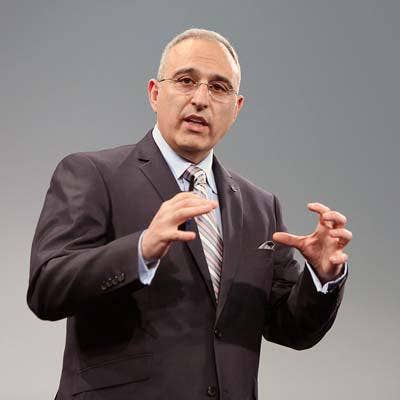
HPE: Full Speed Ahead On Hyper-Converged Infrastructure With SimpliVity
Antonio Neri, executive vice president and general manager of Hewlett Packard Enterprise's Enterprise Group, spoke with CRN about HPE's hyper-converged product road map in the wake of its just-completed $650 million acquisition of SimpliVity, the plans to end SimpliVity development on Cisco Systems and Lenovo platforms, and the VMware partnership.
The SimpliVity acquisition effectively reshapes the hyper-converged landscape, putting HPE in the heart of the market with an offering aimed at grabbing share from the likes of Cisco and market leader Nutanix.
HPE is using the SimpliVity software not only as part of a new family of HPE SimpliVity HC 380 hyper-converged offerings, but also as part of a broader set of enterprise software-defined storage fabric offerings.
The extensive HPE SimpliVity software-defined road map includes a full hybrid IT solution with SimpliVity becoming the software-defined storage layer, including tight integration with HPE's OneView management platform. HPE also plans to integrate the SimpliVity software with HPE Synergy and 3Par.
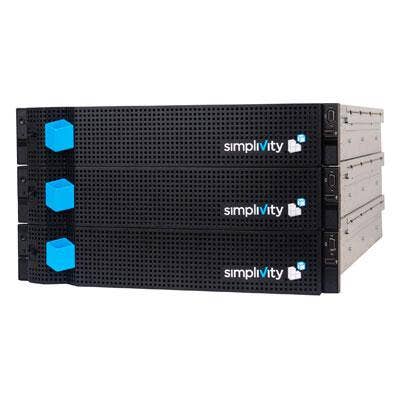
According to IDC, SimpliVity sales have actually been falling year over year, at least in the third quarter of 2016. What happened?
I can't comment on specific numbers, but SimpliVity sales have continued to grow, high double digits. … They were keeping pace, actually growing at a much faster pace, than the market growth. The hyper-converged market is one of the markets in the traditional data center that's growing fastest.
The SimpliVity team has done a phenomenal job and continued to grow, in particular in the enterprise, which was their strength … because of the features of the product.
So overall, what they saw here was an opportunity to accelerate their go-to-market with the other assets of HPE to really take that to the next level. Absolutely, it continues to grow very nicely.

But the IDC numbers seem to indicate that sales fell from $20 million to $18 million in the third quarter of 2016.
If you think about it, what they have been doing is transitioning from a pure hardware-appliance-centric [offering], what they call the OmniCube, to the OmniStack solution. The strategy for SimpliVity is all about how to land this software stack, which is basically the OmniStack, into multiple platforms. [SimpliVity] has a relationship with Cisco and Lenovo and even Huawei. So from their perspective, they have been pivoting from a hardware-centric to a software-centric [model], and that has fewer revenue components. [But] the bookings continue to grow in high double digits. So what [IDC reported] is probably revenue. We look at bookings.

That same IDC report also shows HPE's hyper-converged infrastructure revenue growing from $3 million to $15 million year over year in the third quarter. How does HPE rationalize having two what had been competing lines? Will HPE keep both?
In the short term, we're going to keep both platforms for the next 60 to 90 days. And then eventually, we will converge them. [As we announced], we're going to now qualify and integrate the OmniStack solution that we just talked about into the HC 380. At the core of the HC 380 is the ProLiant DL380, which is the industry-leading virtualized server. Also, as I announced at Discover in London, we are introducing the next generation of operating environment for hyper-converged, which is the evolution of what the HC 380 is today.
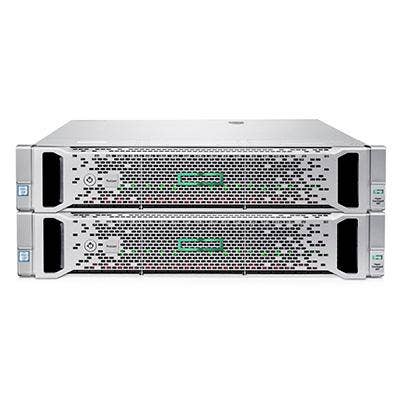
What's the latest on the HC 380?
We position the HC 380 today as a VM [virtual machine] vending machine. We can provision a virtual machine in five clicks. Even me, I can do it in 45 seconds. We're going to take the next generation of that, which is aligned to our hybrid [hyper-converged] strategy, which will [go] beyond HP OneView and the automation that goes with it, will include brokering and orchestration capabilities. And we'll have different flavors of that stack. We announced [Microsoft] Azure; we support VMware and OpenStack. But the follow-up of the HC 380, which now is the DL380, will be the SimpliVity data services, which is very differentiated from what we see in the market.
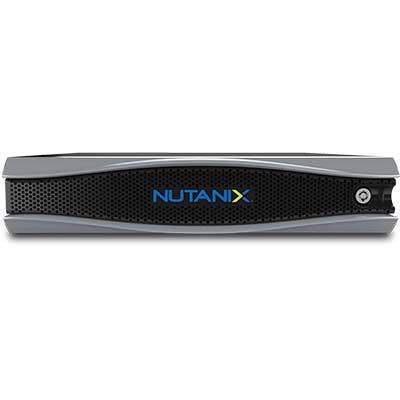
How is that different from what Nutanix is doing?
When you look at Nutanix, which has been the market leader here, it has been focused more on use cases like VDI [virtual desktop infrastructure] and user experience. Their solution at the storage level is not efficient. The most efficient at services is SimpliVity. The reason is because [SimpliVity built] it from the ground up as an enterprise-grade data services fabric that addresses many problems that customers in the enterprise normally look for: scale, performance, performance at peak, data mobility, scale-up, scale-out. And the other important part is basically building resiliency and data protection. So you don't need to add more functionality, more software on top of the appliance, to drive the data resiliency. SimpliVity has that built within the core.
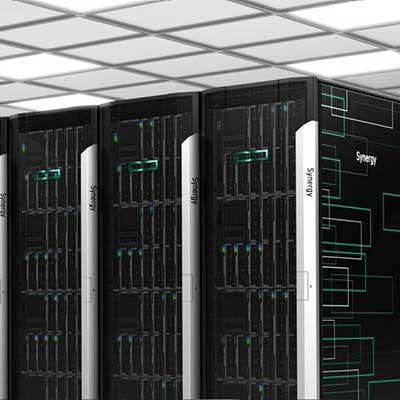
What's the end game?
[We will] have a platform called HPE SimpliVity in different flavors. There will be one based on the DL 380, some based on Apollo. Different use cases. There's a storage solution, a VDI solution, a hybrid cloud solution on-premises.
But the platform will be called HPE SimpliVity. At the core will be the SimpliVity data fabric. The management system will be HPE OneView, which is consistent from the traditional data center to hyper-converged to Composable [Infrastructure], which is HPE Synergy. And then on top of that, you're going to have this new operating environment with this new experience that we have been working on.
Ultimately, we have a cohesive strategy from traditional to hyper-converged to Composable. ... And across all of that we're going to use SimpliVity. That's an important point. I'm not going to use SimpliVity just for hyper-converged. I'm going to put it in HPE Synergy. And I'm going to put it in other storage solutions.
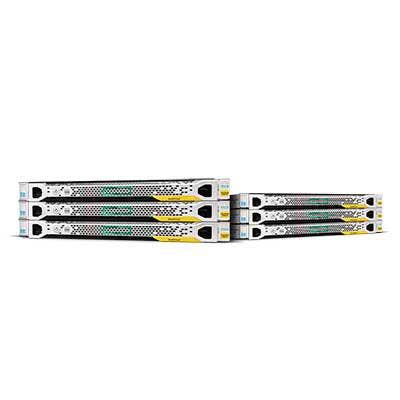
Then does HPE's StoreVirtual technology disappear from the company's converged and hyper-converged solutions?
StoreVirtual, as a unique appliance, will continue to stay there, for a while. And then eventually [StoreVirtual and SimpliVity] will converge. We have customers who like StoreVirtual for several reasons. It is more a storage solution than a compute solution. [StoreVirtual] stays with the VSA [Virtual Storage Appliance] solution, and that ties with 3Par in many ways because you can move data back and forth.
[HPE SimpliVity] will use the SimpliVity fabric across hyper-converged, and then everything else. And eventually, these two trains, over time, depending on the architecture and the use cases, will [have] a common data fabric, which will include the VSA components of block, the SimpliVity components of file, [a major gap] in our portfolio for a long time, and then the object solution [where] we have an investment and partnership with Scality.

How about the data services?
Eventually, we're going to have one common set of data services with three types of metadatas. ... Hyper-converged now becomes integrated in our entire set of solutions from traditional to converged to hyper-converged to Composable. The data services needed for file will be SimpliVity.
We are very excited about this. Because now, hyper-converged is an island in the data center. … We don't treat it as an island. We treat it as a part of the same infrastructure. We should have the same experience to deploy it, to manage it, to life-cycle-upgrade the solutions whether it’s a server, storage, or hyper-converged, or Composable. You get the same experience, which is unique. And you get the same data services.

So what happens to SimpliVity's relationships with its meet-in-the- channel partners Lenovo, Huawei and Cisco?
We will continue to support those until we integrate [SimpliVity] into our platform. Obviously, over time we're going to integrate the solution into our portfolio. Listen, Cisco has their own solution called [HyperFlex]. Lenovo has another relationship with Nutanix. Huawei, I'm not sure about it. But in the end, our goal for the customers who have already moved to the SimpliVity stack with whatever platform, we're going to continue to support that. That's our commitment. That's what we told them. That's what we told the market.
Over time, we will integrate the full OmniStack into our HPE stack. And it will be run on HPE hardware.

So once that integration happens, there'll be no more support for these meet-in-the-channel relationships?
Correct.
When do you expect that integration to actually happen?
We said that [within 60 days of the acquisition] we'll introduce the first platform. And then we're going to integrate the rest of the experience I talked about earlier within the next six months. So you should expect that, within the next six months, we're going to fully transition this thing.
So you are going to send those vendors scrambling over the next few months?
I think they have to decide what strategy they want to pursue. That's a problem they'll have to solve themselves.
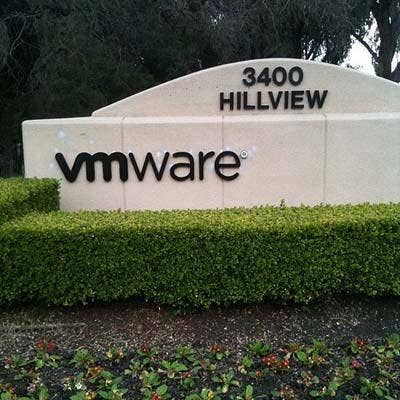
The market's biggest hyper-converged infrastructure vendor is Nutanix. Dell EMC is right behind it, and is possibly already exceeding Nutanix because of its higher growth rate. Does HPE have a plan to partner with Dell EMC's VMware vSAN for hyper-converged infrastructure?
We already do. We already support vSAN Ready Nodes. We are the largest partner for VMware, by any metric. We represent more than one-third of VMware deployments, when it comes to servers. We need to provide customer choice. From that perspective, absolutely we support vSAN Ready Nodes.
[But] we are going to lead with our products, which in this case will be the HPE SimpliVity hyper-converged solution.

When you say you support vSAN Ready Notes, do you mean you support the technology on HPE hardware? Or that you resell the technology?
We support it on HPE hardware. We ship that as an integrated solution to our customers, and we back that from the engineering perspective, and from the support perspective with our Technology Services Group. Like anything else we have done with VMware, once we integrate, we support it end to end.
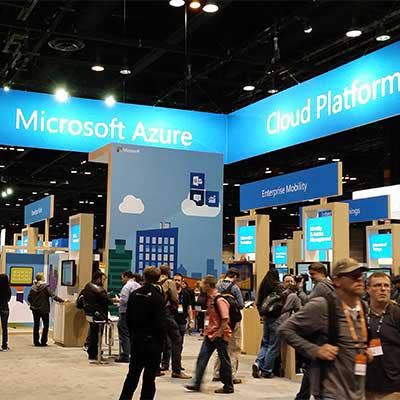
How about support for Microsoft Azure?
There will be an HPE SKU for the Azure Stack on hyper-converged, too. We already did that with the Azure Pack [self-serve portal and cloud services] on the HC 250.
If you go back to the core of our strategy, we are a multi-cloud-strategy company in that we support stacks that you are very familiar with: Azure, VMware, OpenStack, [others]--and that's the customer choice. What we are providing now is an integrated appliance with what we believe is the enterprise features needed to deploy in a non-island-driven approach. And then we have a strategy to move customers into Composable because we believe that's a more efficient way to implement private cloud and hybrid IT on-premises.
Does HPE partner with Nutanix at all?
No.
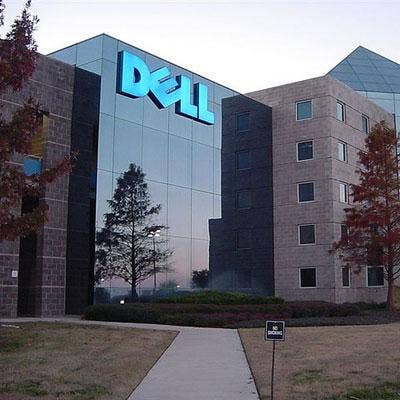
Competitors have told me that, with the acquisition of SimpliVity, HPE will be sending even more money to archrival Dell for even more VMware licenses. Does it bother HPE that Dell becomes a major beneficiary of HPE's SimpliVity acquisition?
No. We have been a phenomenal partner with VMware for 15 years. And we continue to lead the pack when it comes down to deploying VMware infrastructure. We, in the end, want to support the way customers want to deploy their solutions.
SimpliVity now supports VMware. And by the way, it will also support Hyper-V solutions. In the end, we give customers the choice. We will capture every aspect of [customers'] software-defined architecture that goes on top of it, including the storage solution underneath that and all the compute that goes with it. … In the very near future, HPE SimpliVity, as an appliance for hyper-converged, will also have a solution that's only container-based.

Does HPE have any plans to one day introduce its own hypervisor, thereby eliminating the need for customers to pay for Hyper-V or VMware hypervisor licenses?
At this time, we don't have a plan to introduce our own hypervisor. Honestly, we are more interested in driving that integrated, hybrid IT experience. We talk about making it simple. Today, you have private, on-prem and off-prem. They are pretty much run in silos now. They don't know where the workloads go, how to position them in the right place, what they're consuming, how much they're paying. Our focus is really to drive that experience to the simplest level. And we will support multiple hypervisors. But that's part of the strategy. We have been investing in OpenStack for a long time. And now we have the partnership with SuSE on that one. And then ESX, Hyper-V, and container-based solutions are going to be next.

Do you see further consolidation happening in the hyper-converged infrastructure industry? I ask because, by some counts, there are over 30 vendors in this space.
I do believe there will be further consolidation. In my view, there are way too many companies, and they are all feature-related approaches, not an integrated platform. Everybody is focused on one specific use case, one specific feature or fewer features. My view is that, over the next one or two years, there will be more consolidation in this space. And, in the end, I think you will see Nutanix, who's been there now for some time; us, obviously; obviously VxRail; and we'll see what Cisco does. But in the end, there will be three or four platforms which are going to thrive in this market going forward.

Is it possible to make money on hyper-converged infrastructure? Nutanix is dealing with heavy losses. I don't believe SimpliVity ever made a profit. None of the startups are profitable, as far as I can tell. Dell EMC is still early with VxRail.
Any startup [wants] to establish themselves in a specific segment, and then to grow and go to an IPO. But then they keep feeding the machine. It's a bitter race to get multiples on the revenue and continue to invest every possible dollar back in R&D and G&A [general and administrative expenses].
Once you bring those solutions into a scaled business like Hewlett Packard Enterprise, this is not a hard sell in the context of what we are already selling. We are present in enterprise segments. We are present in the data center. We already shifted towards hybrid IT. A lot of use cases are storage-driven. It's very natural to leverage our scale to really bring it to the next level. The margins in this one are really very good because you have a rich software component to go with it.

A lot of people are scratching their heads over the price HPE paid for SimpliVity, especially given that SimpliVity's valuation last year by some estimates of over $3 billion. How did HPE and SimpliVity settle on $650 million?
You have to look at every aspect of how you evaluate a company. It [includes] multiples of revenues, and multiples of the value of the company itself. We believe this was the right price for the assets considering everything going on in the market and considering the private funding in the market. …
When you look at the valuation of the company for the funding that they got, up to this acquisition it was valuated at about $1 billion. … We believe we are paying a very fair price for this, and we believe this is going to be one of the best assets, together with Aruba and SGI, that we [acquired].

How about rumors that HPE at one time planned to purchase SimpliVity for over $3 billion?
I don't know where those rumors came from, of $3 billion or so. We never talked about that. I think it was something said in the market. …
Rumors aside, I don't know, people make so many things up.
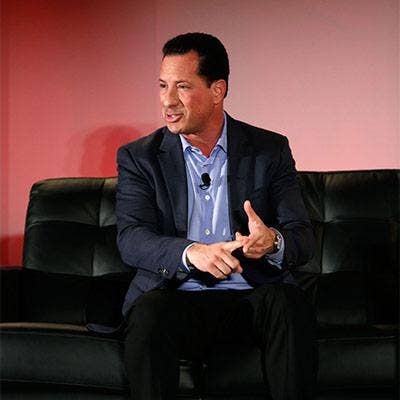
What happens to SimpliVity Chairman and CEO Doron Kempel [pictured]? Is he staying with HPE?
Doron's going to stay with us for a while as part of the transition team. And then we will evaluate. Doron and I are working very closely in integrating the assets as soon as possible. …
The engineering side will go to Ric Lewis [senior vice president and general manager of HPE's Software Defined and Cloud Group]. Ric owns the full end-to-end stack for the company in terms of software-defined and cloud.